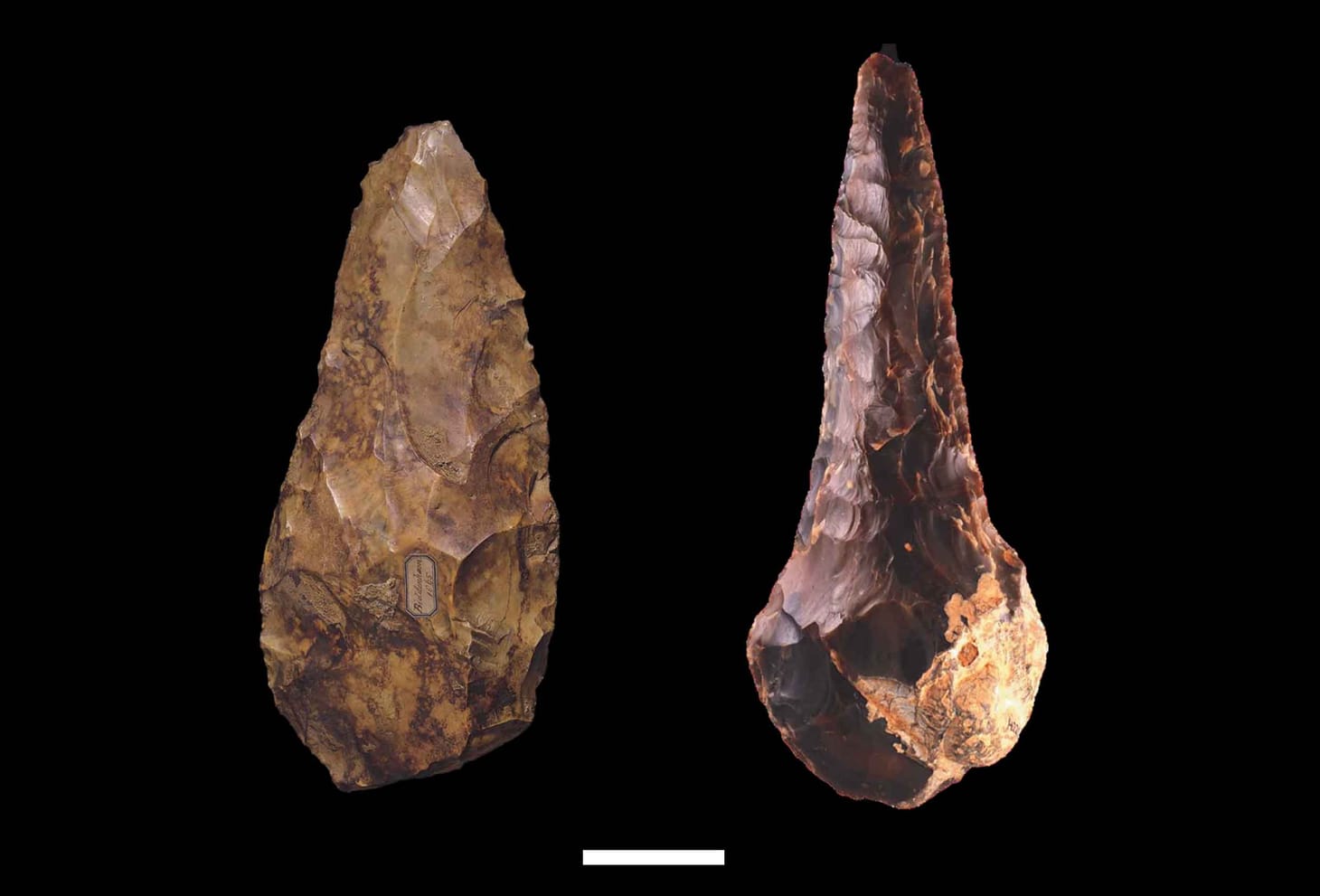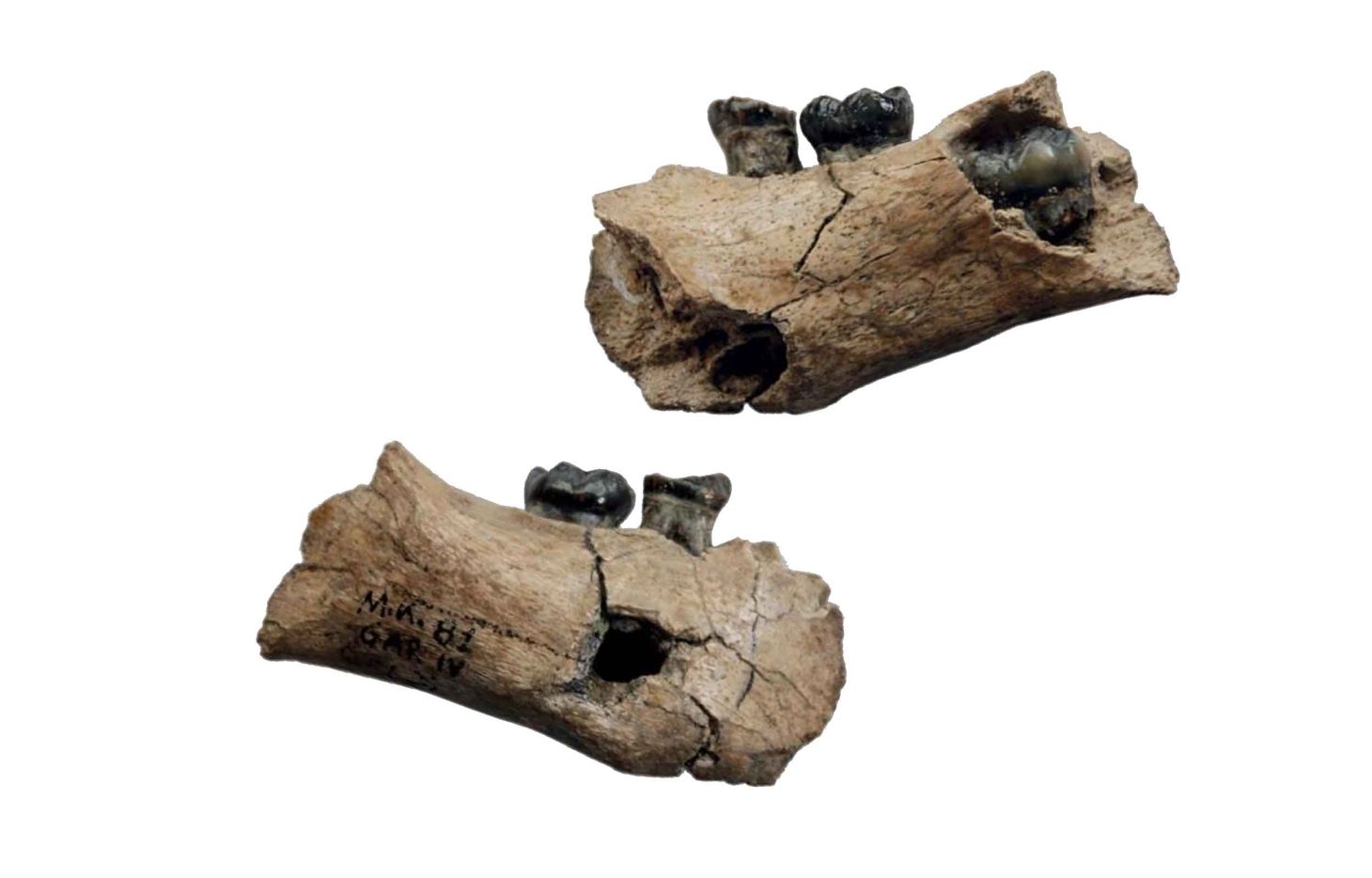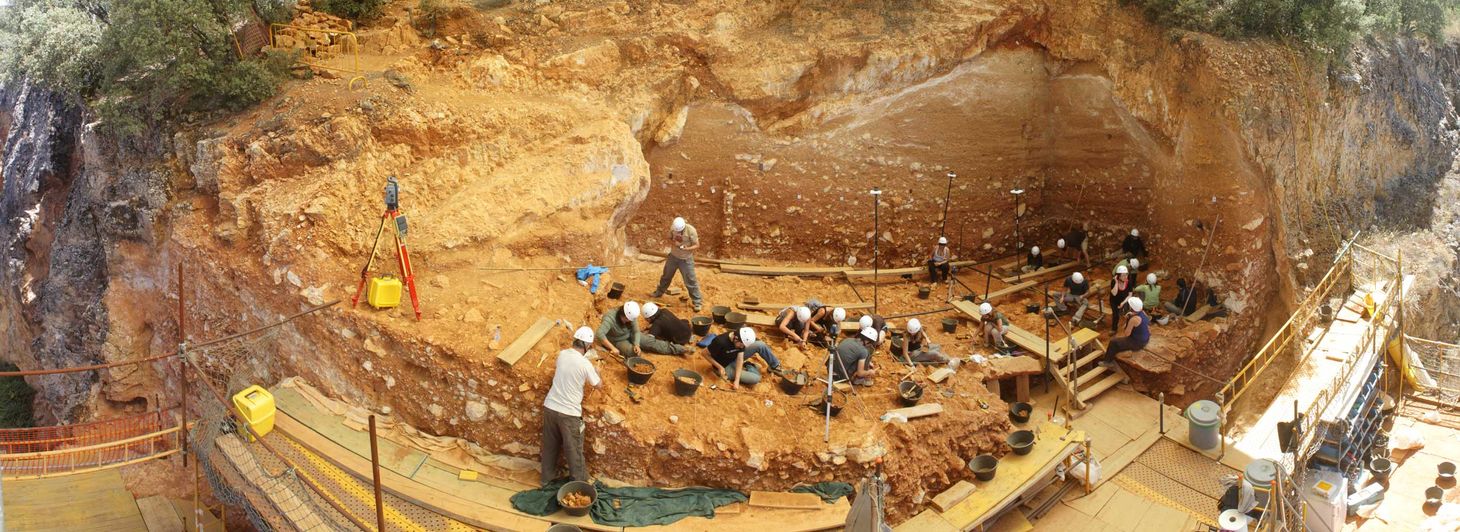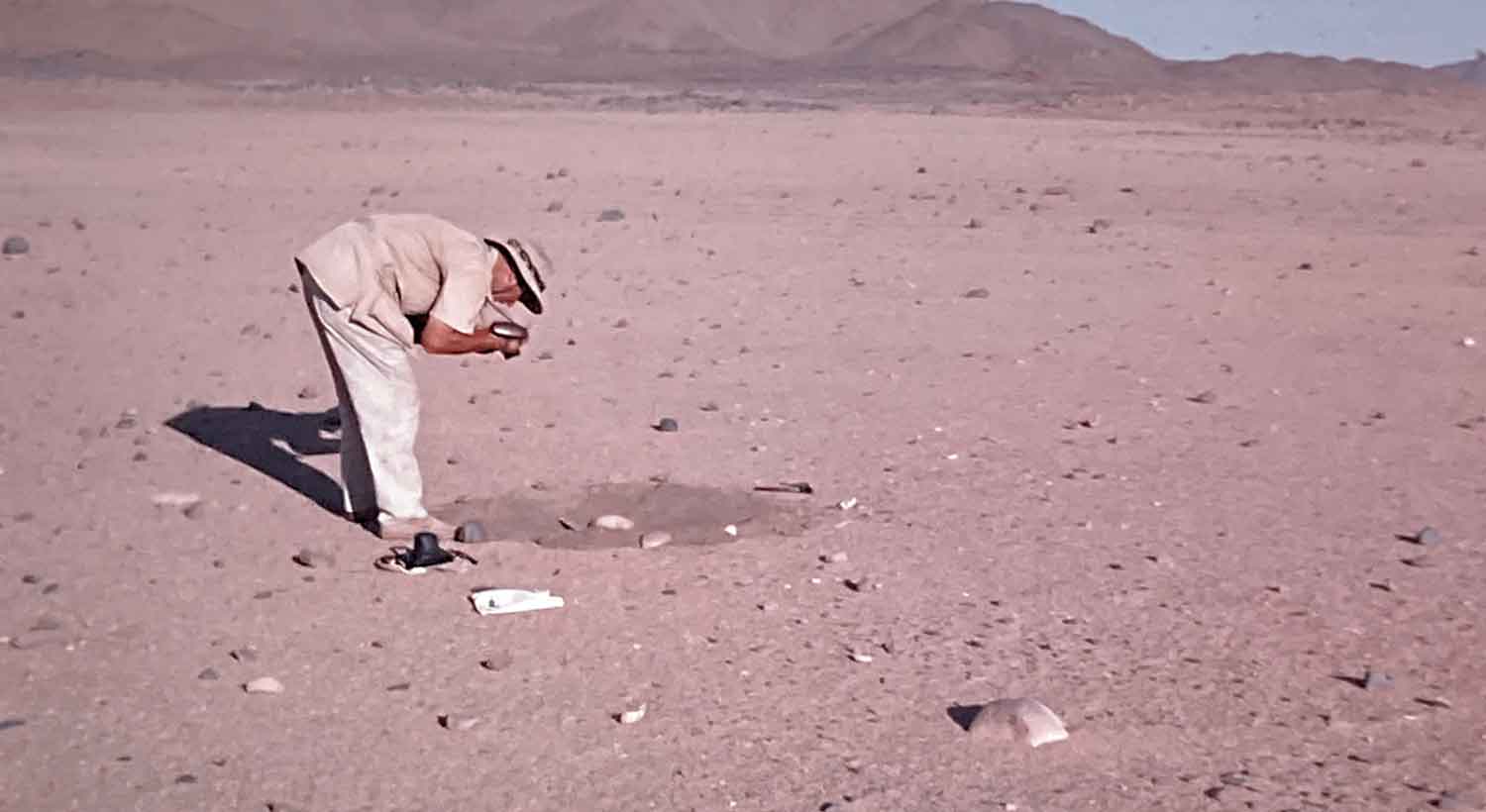Acheulean
Acheulean assemblages are those in which large cutting tools such as handaxes and cleavers are dominant. They were most notable in Africa, West Asia, and Europe at times beginning as early as 1.8 million years ago in northeast Africa—but there are assemblages in other places and times that also fit the pattern.
Why did the ancients make gigantic handaxes?
Looking at new research on the distribution and function of curiously large bifacial tools

Homo erectus keeps getting older
New work from Melka Kunture, Ethiopia, shows the Garba IVE infant jaw is one of the oldest individuals of this longest-lasting hominin species.

Bison bones show butchery practices 400,000 years ago
In the Gran Dolina cave site, ancient people left a bone bed of bison killed in two seasons and butchered at the site with expedient tools.

The transition to Middle Stone Age from Acheulean did not make humans more deadly
Reading a meta-analysis of faunal data by Geoff Smith and coworkers that concludes that all Middle Pleistocene African peoples hunted the same prey animals.

Did Acheulean hominins have long-distance obsidian trade?
I review several papers looking into the occurrence of obsidian artifacts in the Acheulean of eastern Ethiopia.

Remarkable preservation of an Acheulean campsite at Gesher Benot Ya'aqov
My notes on a publication describing evidence for cooking and eating fish, crabs, and plants